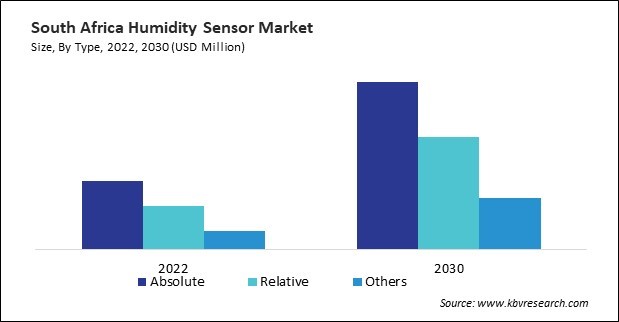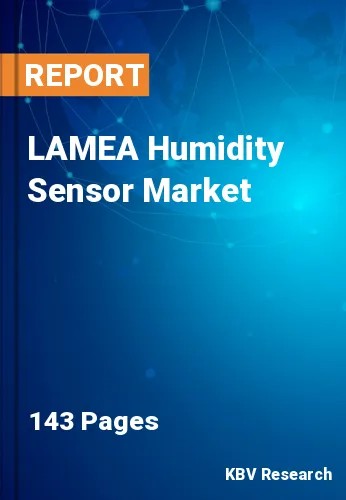The Latin America, Middle East and Africa Humidity Sensor Market would witness market growth of 11.7% CAGR during the forecast period (2023-2030). In the year 2026, the LAMEA market's volume is expected to surge to 334.3 thousand units, showcasing a growth of 13.7% (2023-2030).
These sensors offer high sensitivity, fast response times, and low power consumption, making them suitable for portable devices, HVAC systems, and industrial processes. Resistive humidity sensors, another prominent type, rely on changes in resistance due to moisture absorption, offering simplicity and cost-effectiveness. While less common, thermal conductivity-based relative humidity sensors measure the heat transfer rate between a heated and unheated element to determine humidity levels, ideal for harsh environmental conditions and industrial applications. Therefore, the UAE market would use 25.3 thousand units of relative humidity sensor by 2030.

The Brazil market dominated the LAMEA Humidity Sensor Market by Country in 2022, and would continue to be a dominant market till 2030; thereby, achieving a market value of $56.3 million by 2030. The Argentina market is showcasing a CAGR of 12.4% during (2023 - 2030). Additionally, The UAE market would register a CAGR of 11.4% during (2023 - 2030).
Innovations in sensing materials, such as advanced polymers and nanomaterials, enhance the accuracy and sensitivity of humidity sensors. These materials improve sensor performance regarding response time, precision, and reliability. Integrating wireless connectivity features like Bluetooth and Wi-Fi enables seamless communication between humidity sensors and other devices. This connectivity facilitates real-time data transmission, remote monitoring, and integration into smart home and industrial automation systems.
Furthermore, the integration of artificial intelligence and machine learning algorithms enhances the capabilities of humidity sensors. AI-driven sensors can analyze complex data patterns, adapt to changing conditions, and provide predictive insights, contributing to more intelligent and adaptive systems. Hybrid sensor technologies combining multiple sensing modalities, such as temperature and humidity, are gaining prominence.
The expansion of the healthcare sector in Argentina often involves acquiring and upgrading medical equipment and infrastructure. Humidity sensors are crucial in maintaining optimal conditions for storing pharmaceuticals and medical supplies and operating sensitive medical equipment. Hence, the rising healthcare sector in LAMEA will help in the expansion of the humidity sensor market in the region.
Free Valuable Insights: The Worldwide Humidity Sensor Market is Projected to reach USD 2.3 Billion by 2030, at a CAGR of 9.2%
Based on Type, the market is segmented into Absolute, Relative and Others. Based on End User, the market is segmented into Automotive, Pharmaceutical & Healthcare, Industrial, Food & Beverages, Building Automation & Domestic Appliances, Environmental & Agriculture and Others. Based on countries, the market is segmented into Brazil, Argentina, UAE, Saudi Arabia, South Africa, Nigeria, and Rest of LAMEA.
By Type (Volume, Thousand Units, USD Billion, 2019-2030)
By End User (Volume, Thousand Units, USD Billion, 2019-2030)
By Country (Volume, Thousand Units, USD Billion, 2019-2030)
Our team of dedicated experts can provide you with attractive expansion opportunities for your business.

